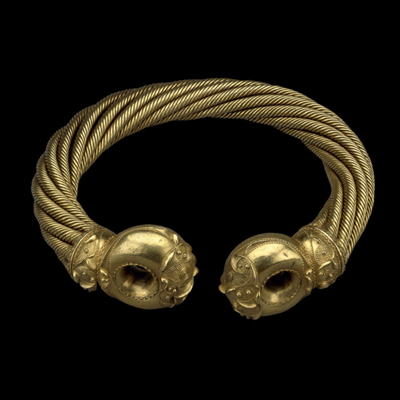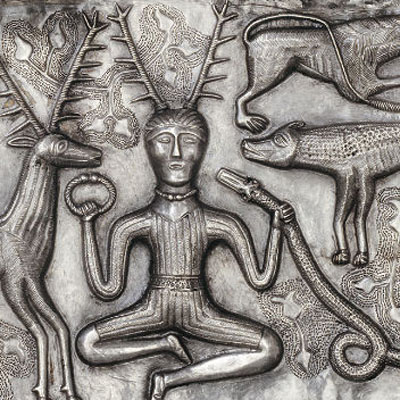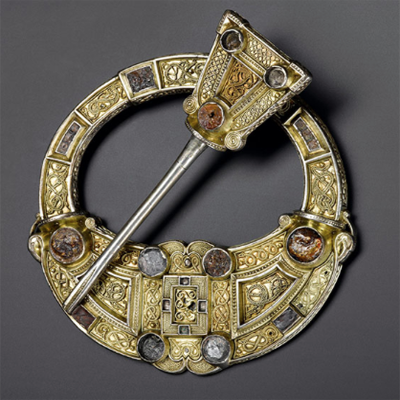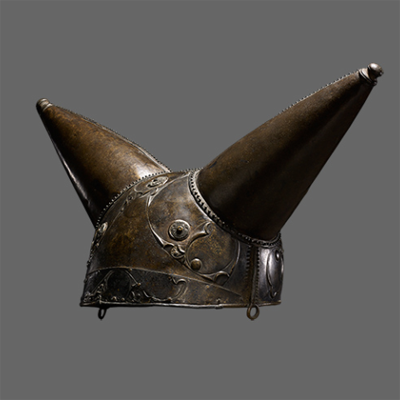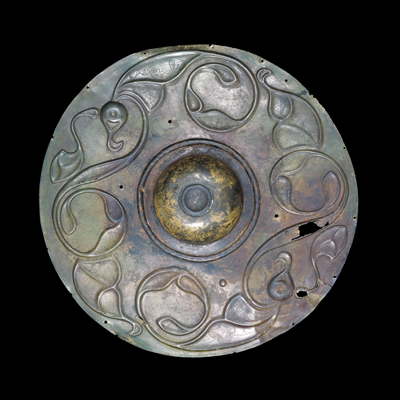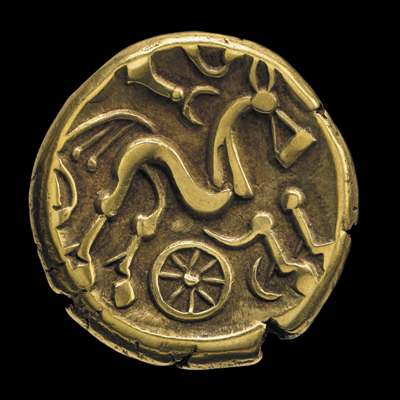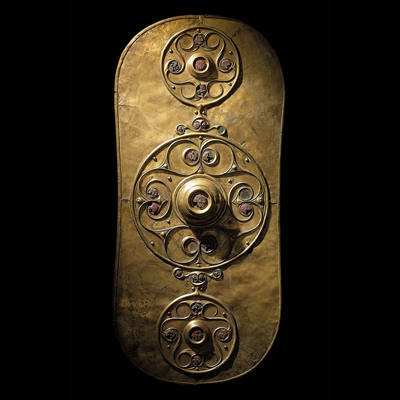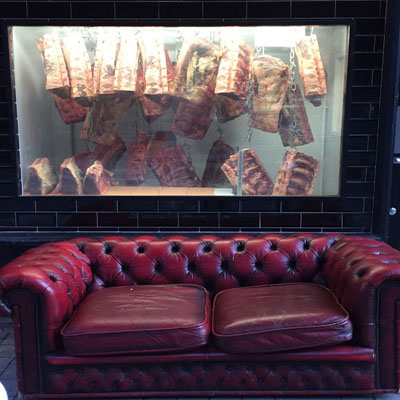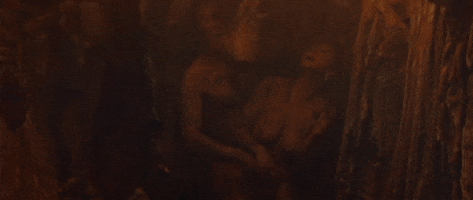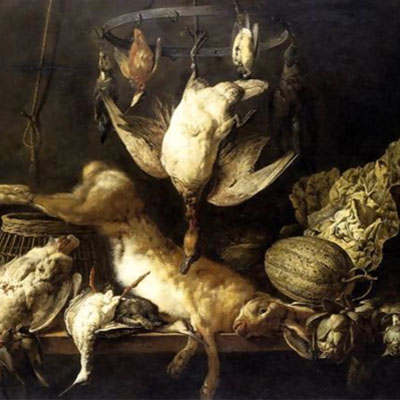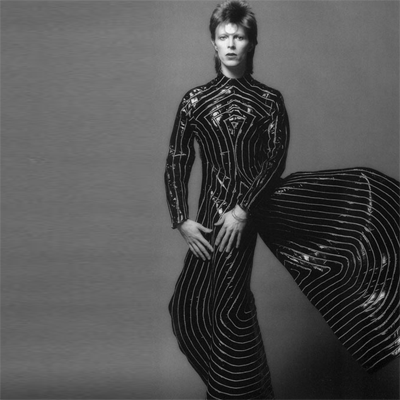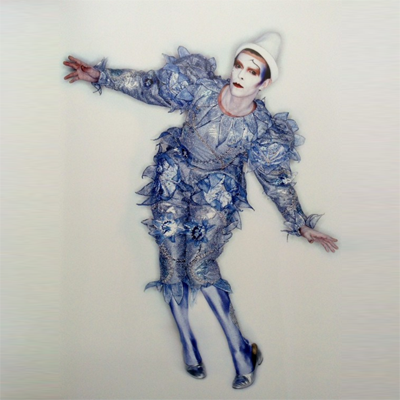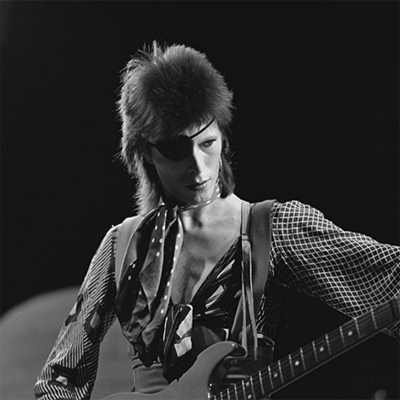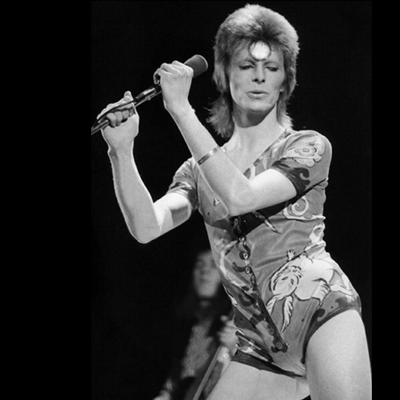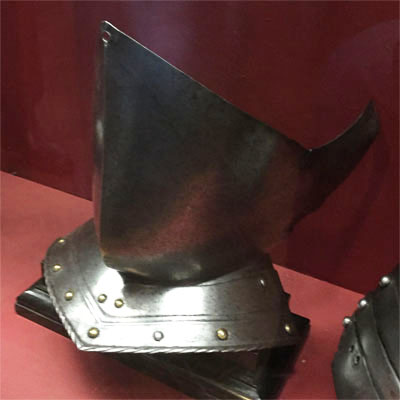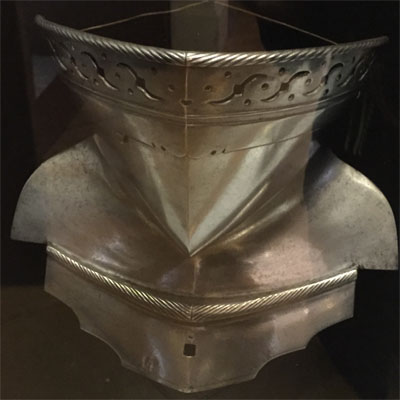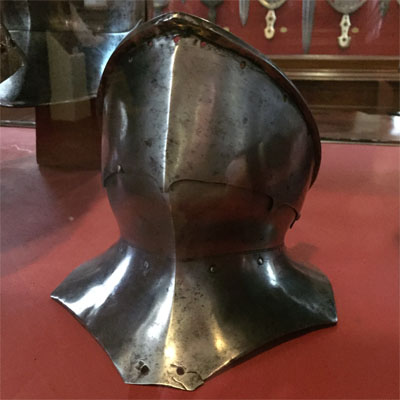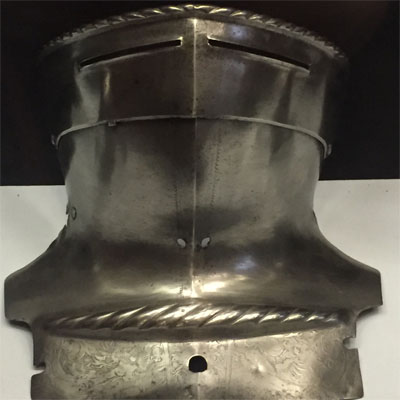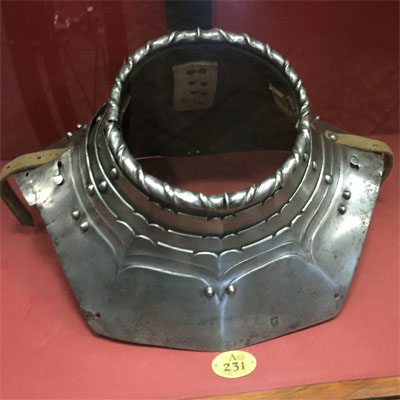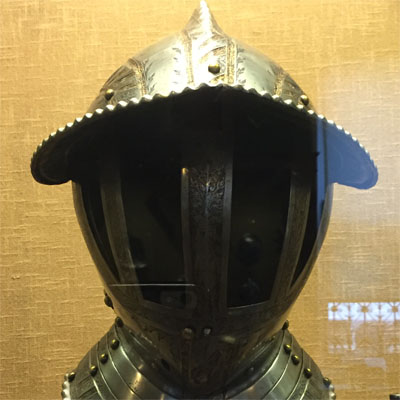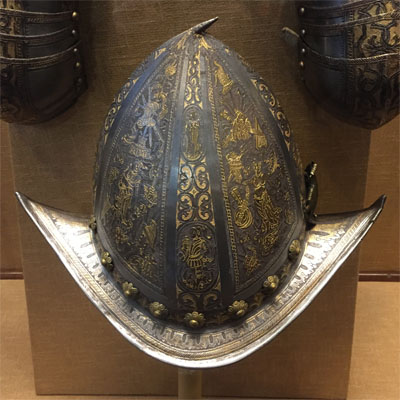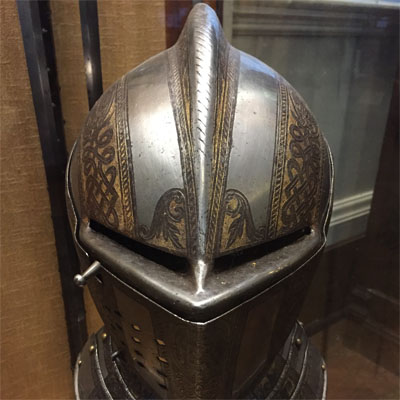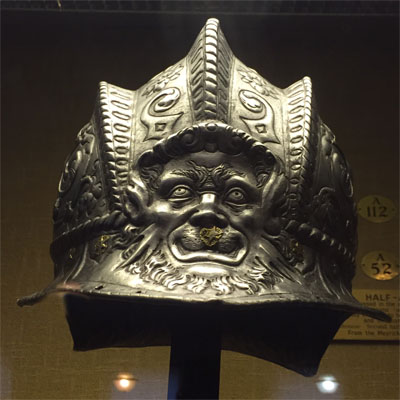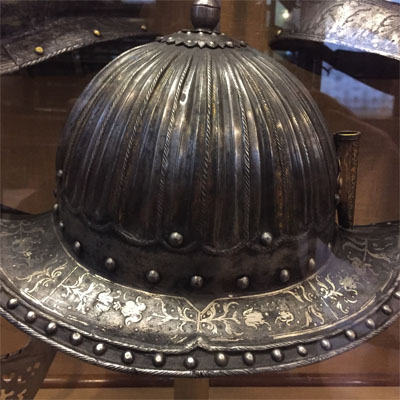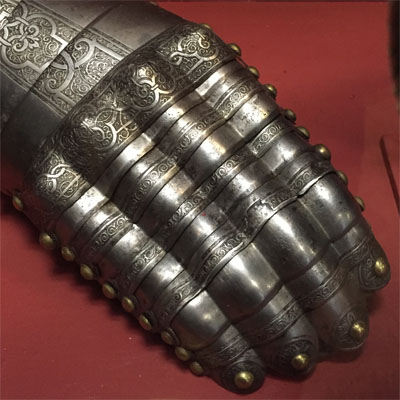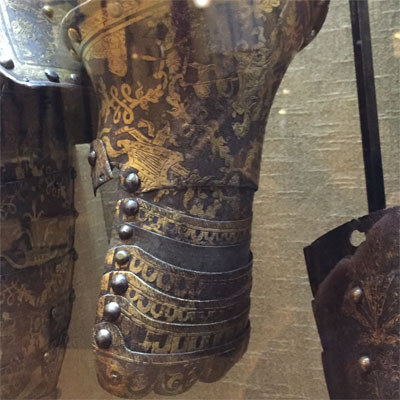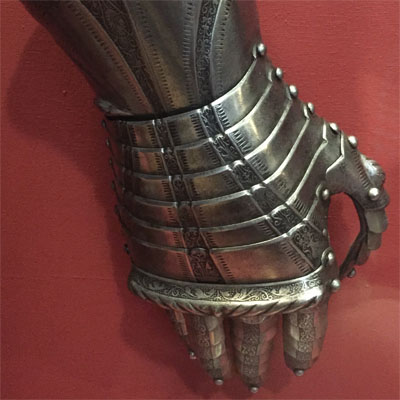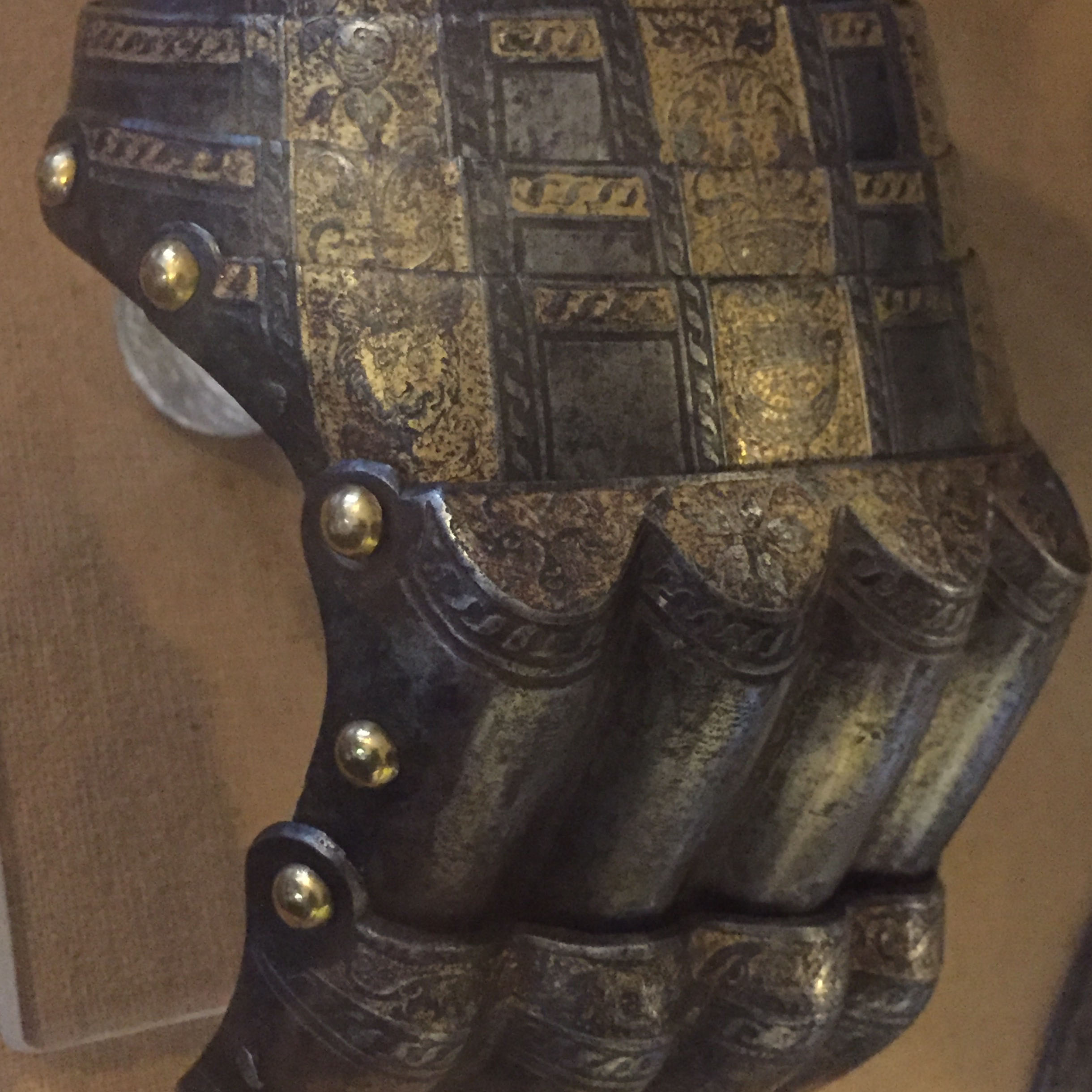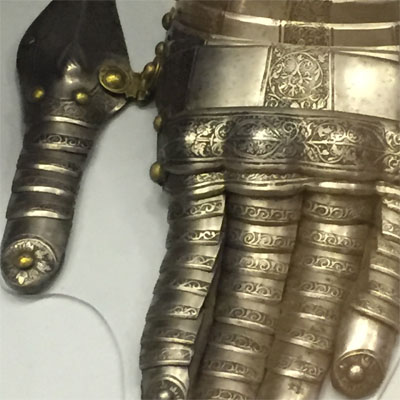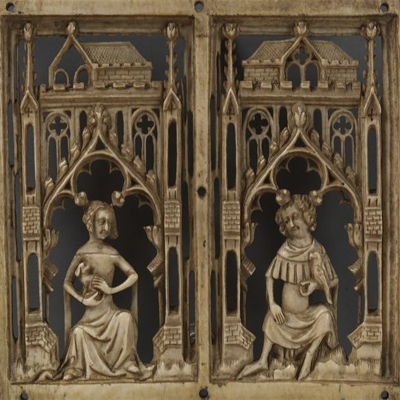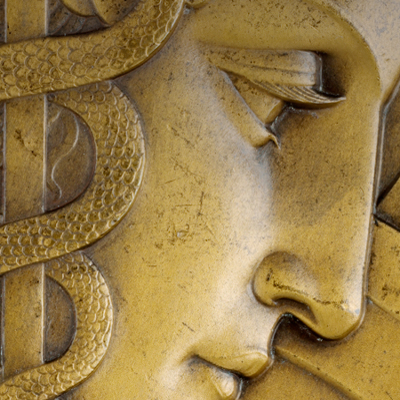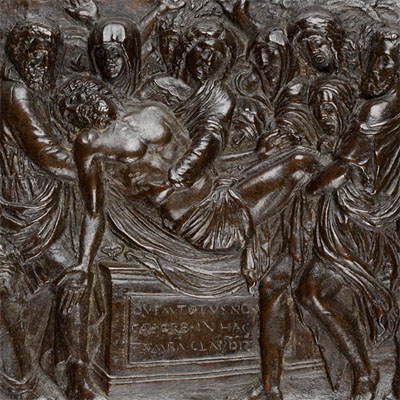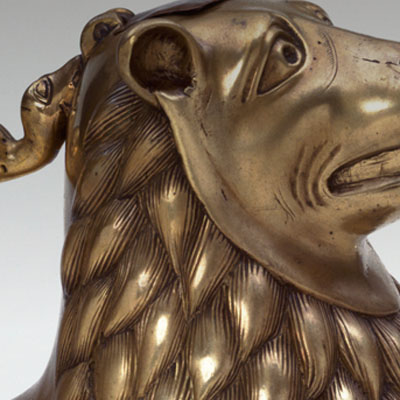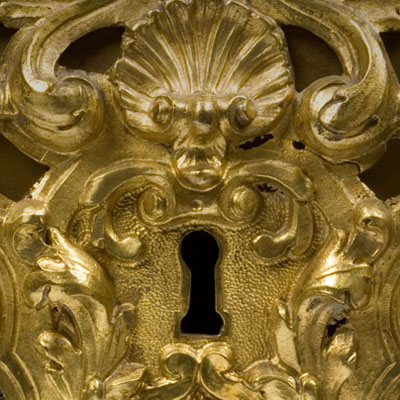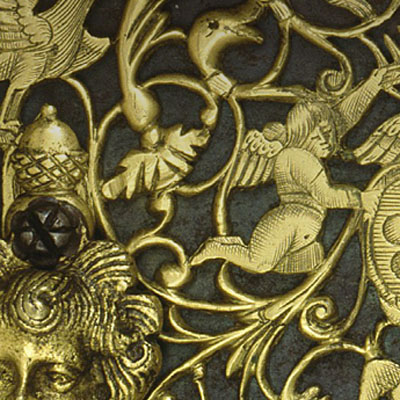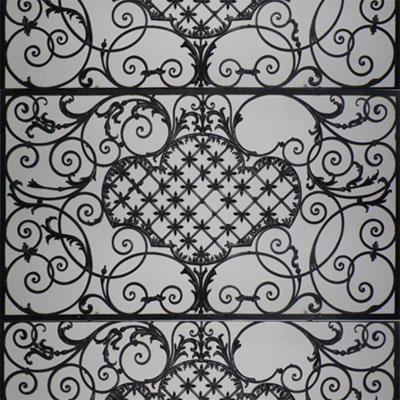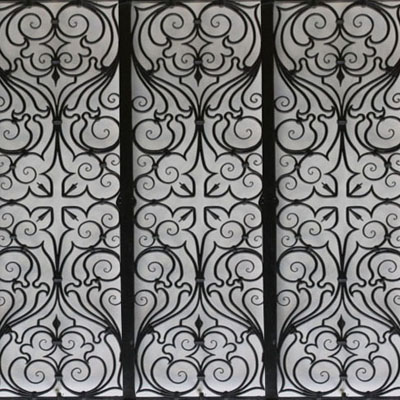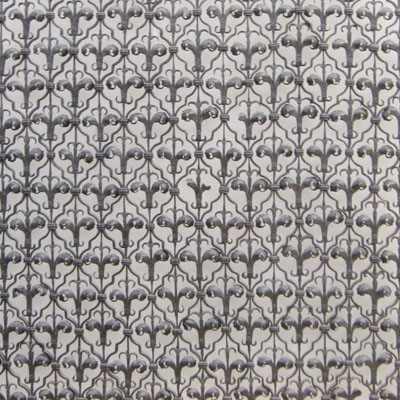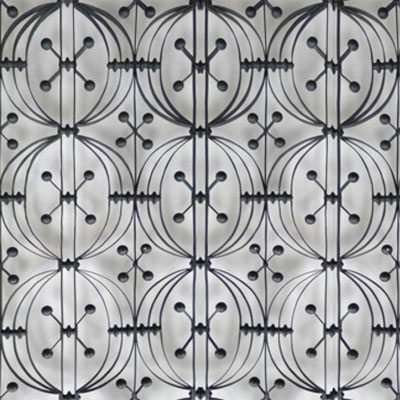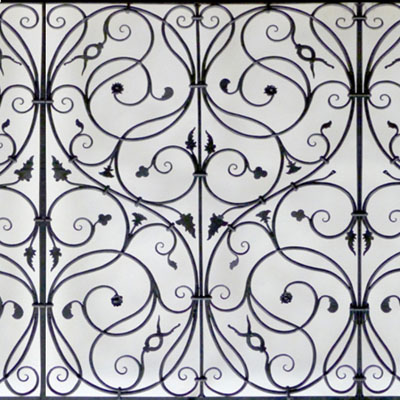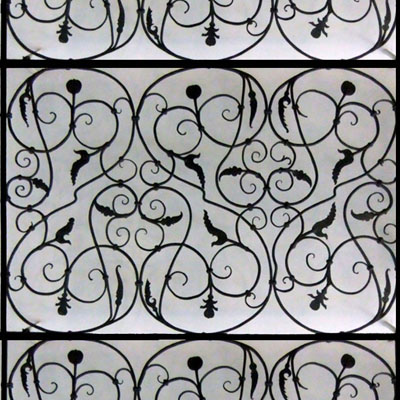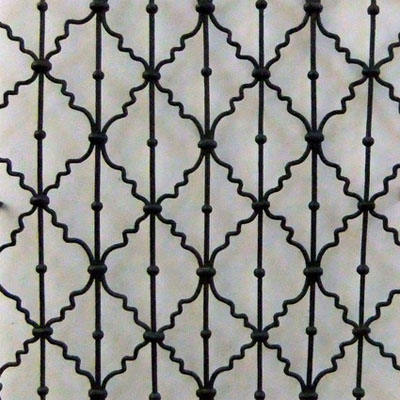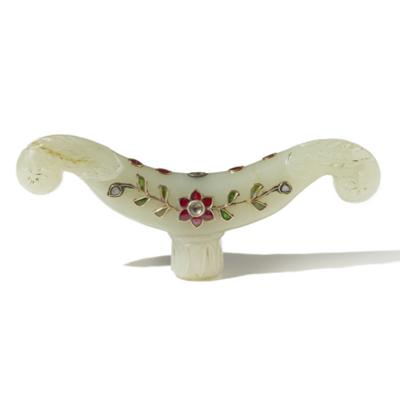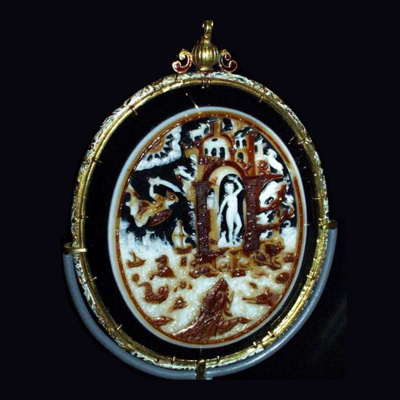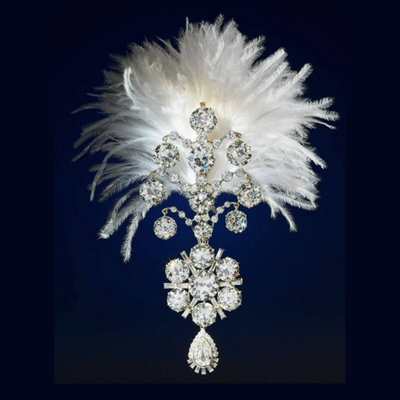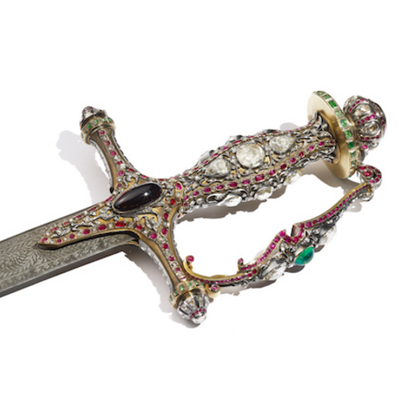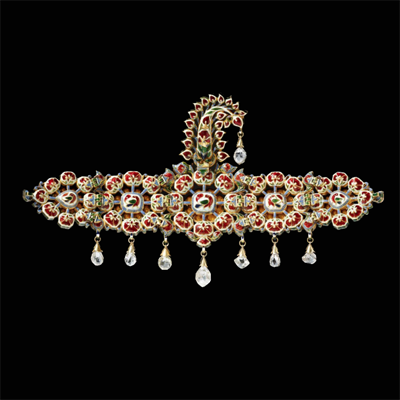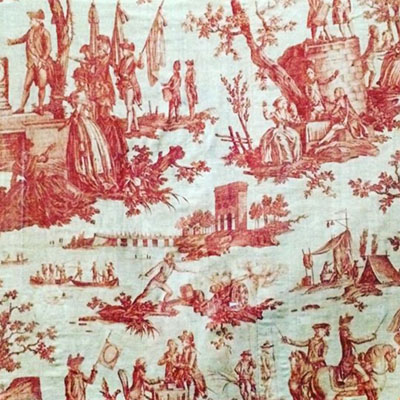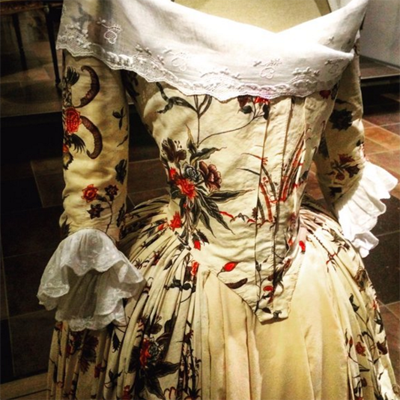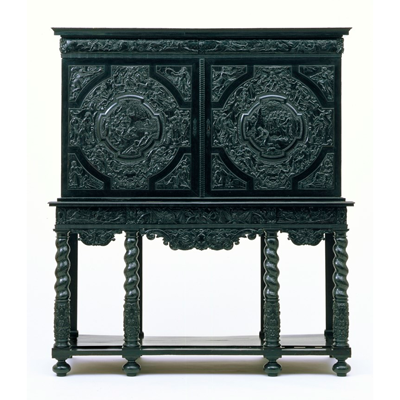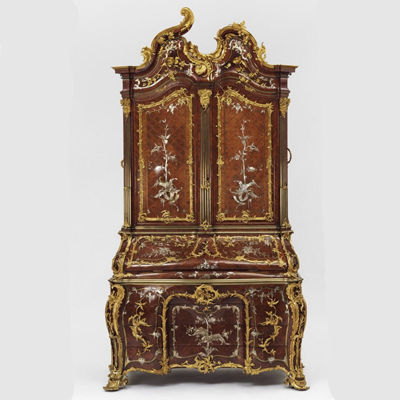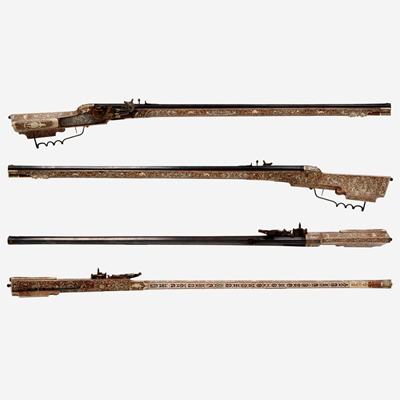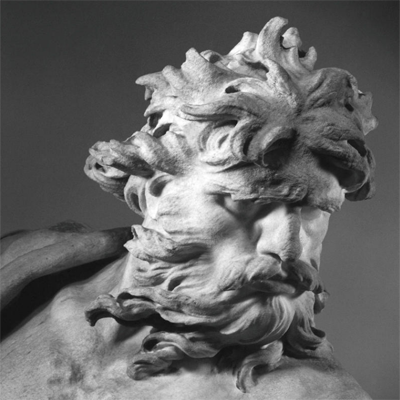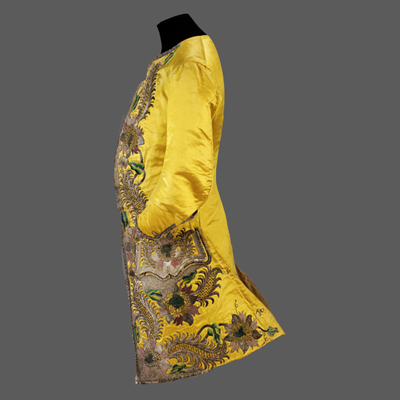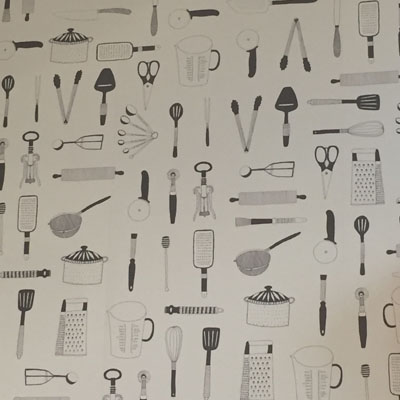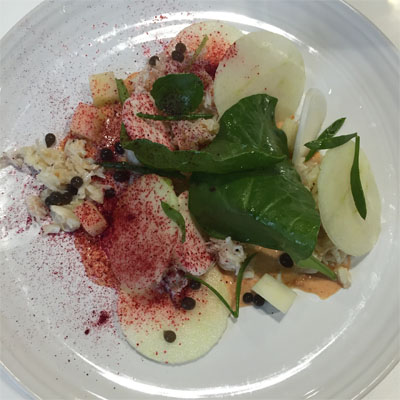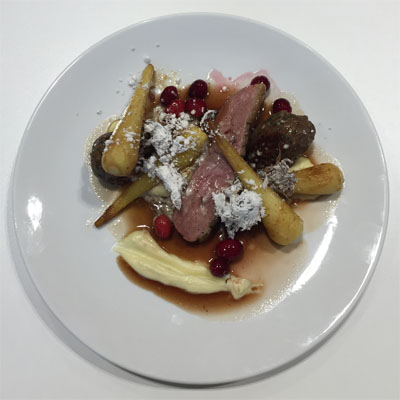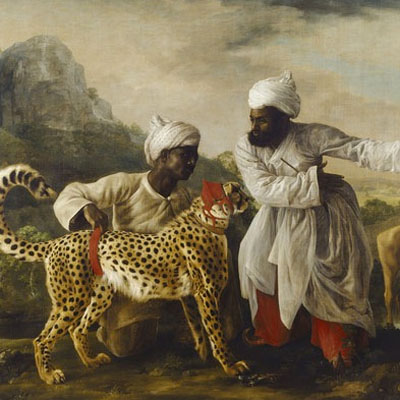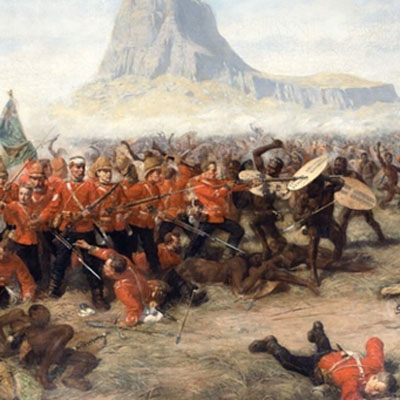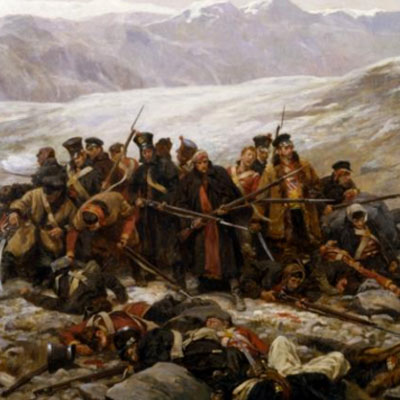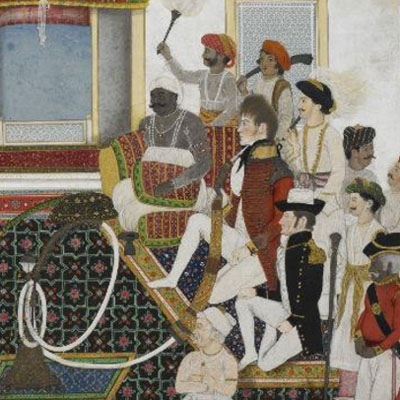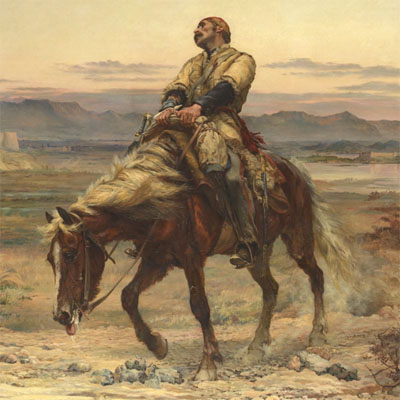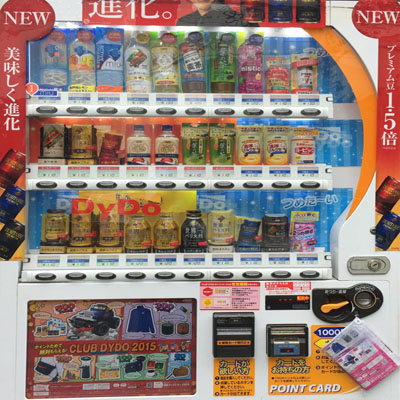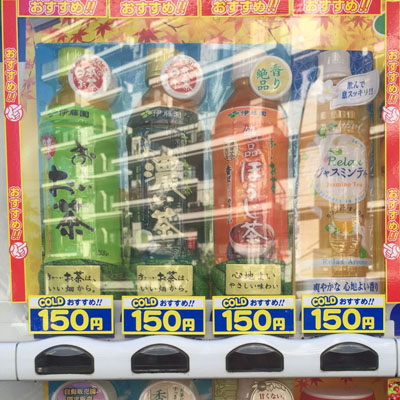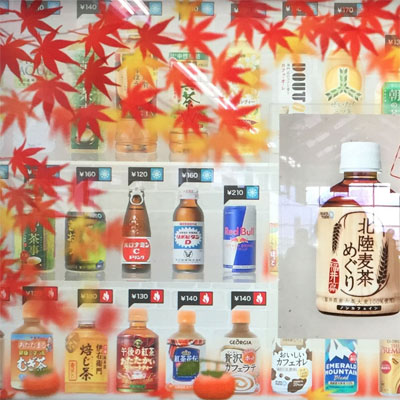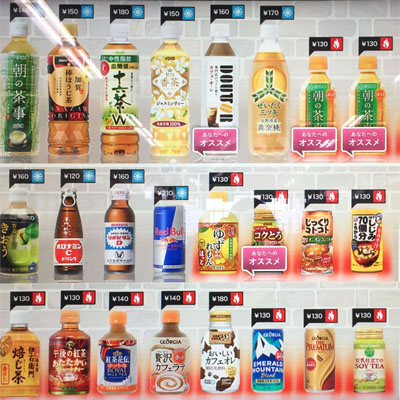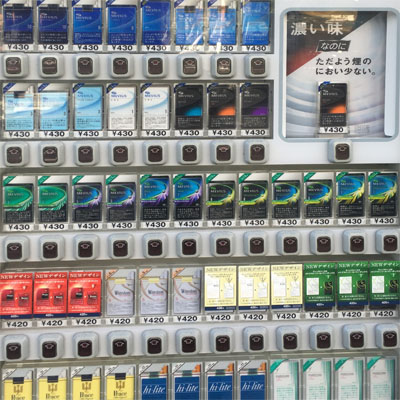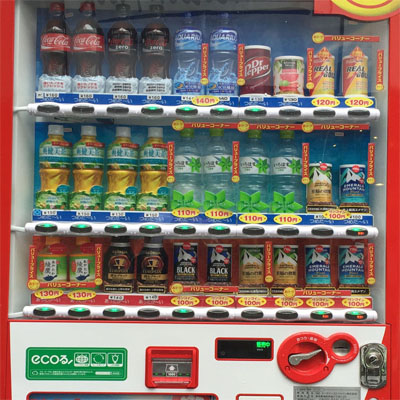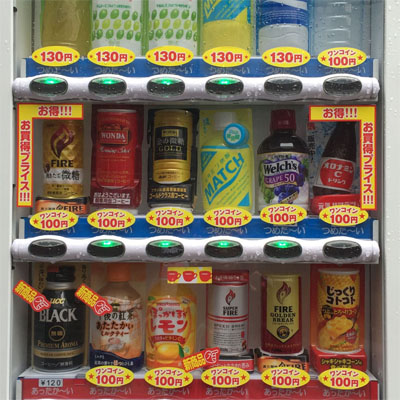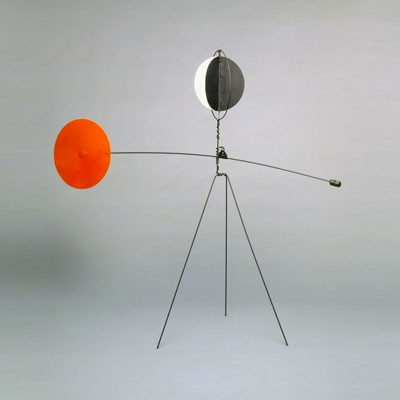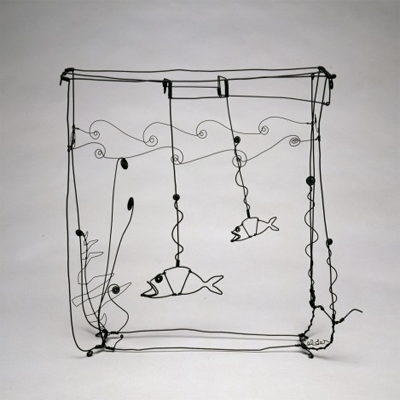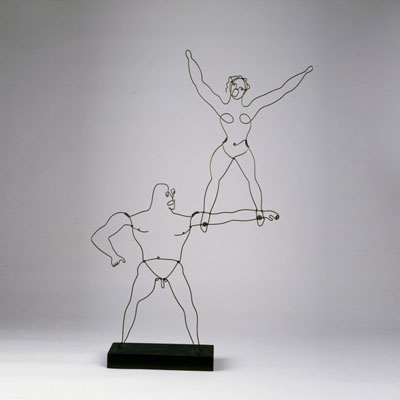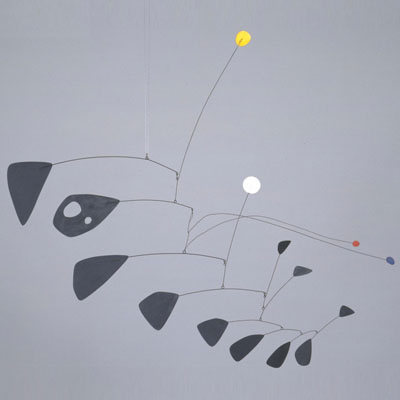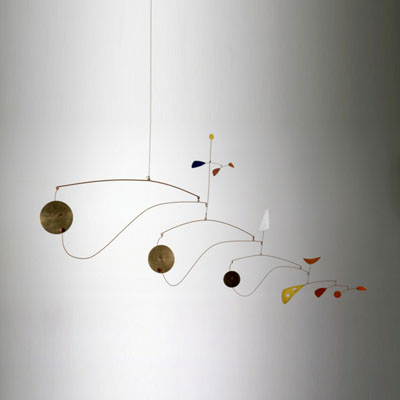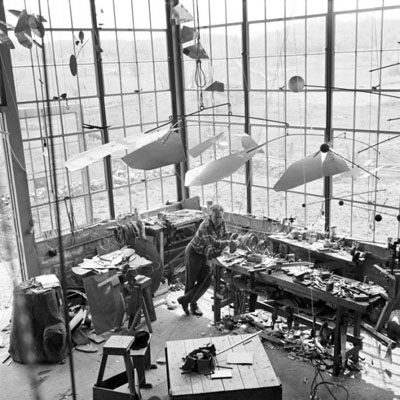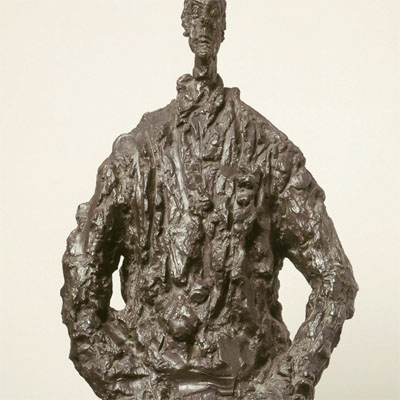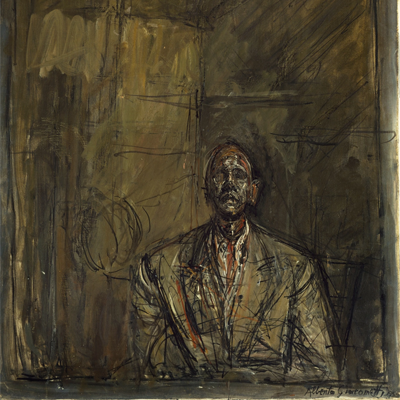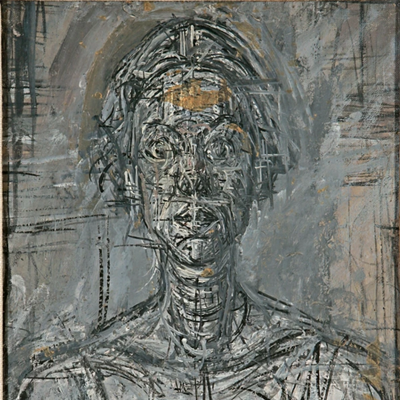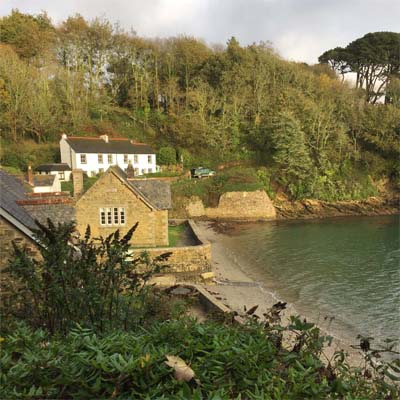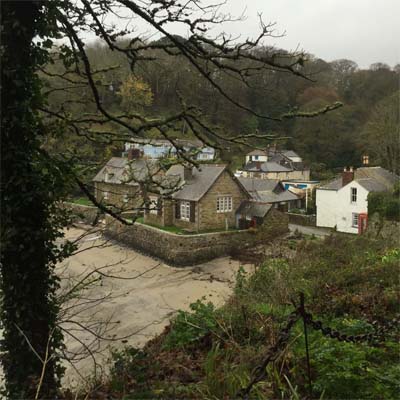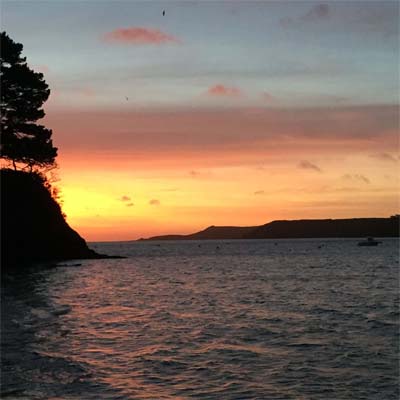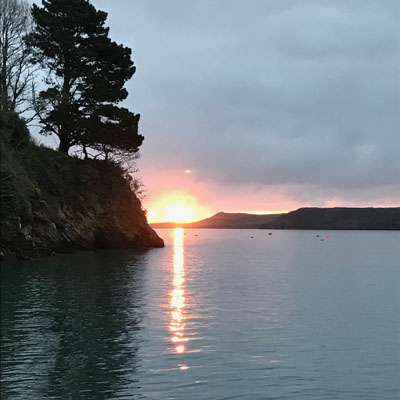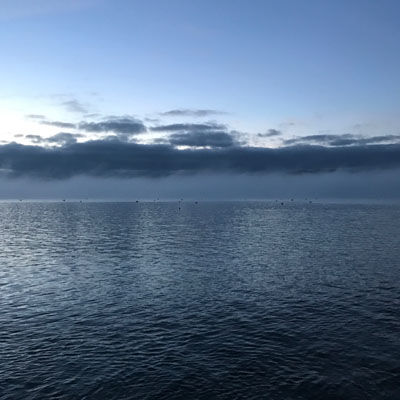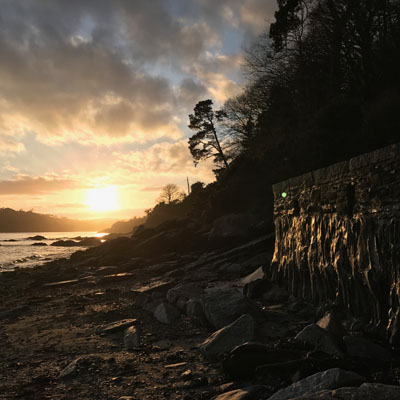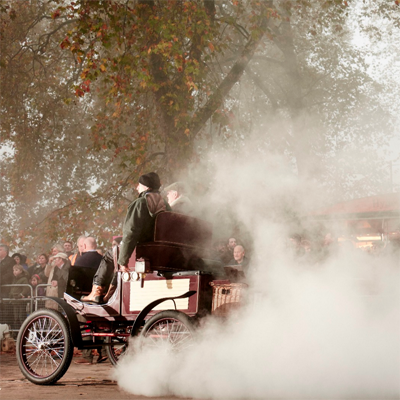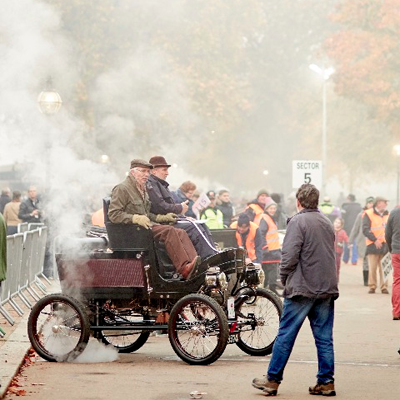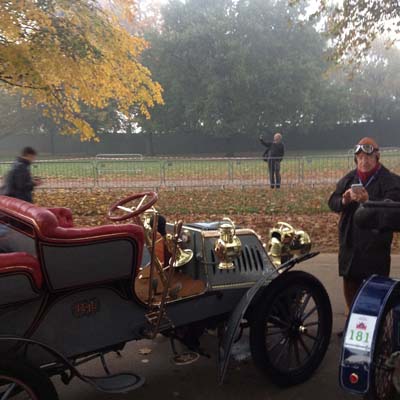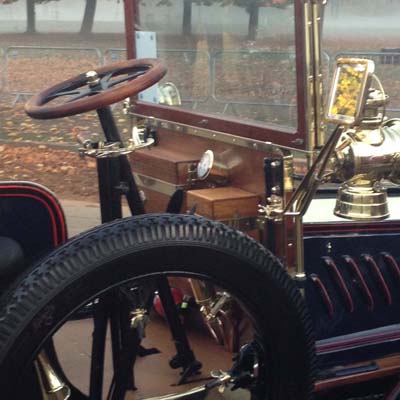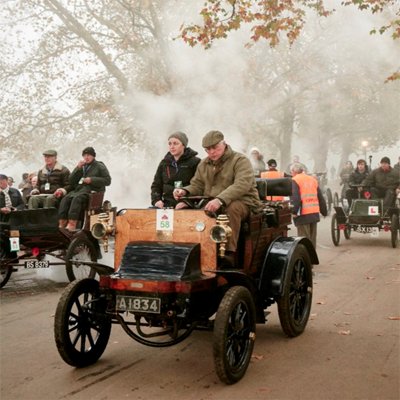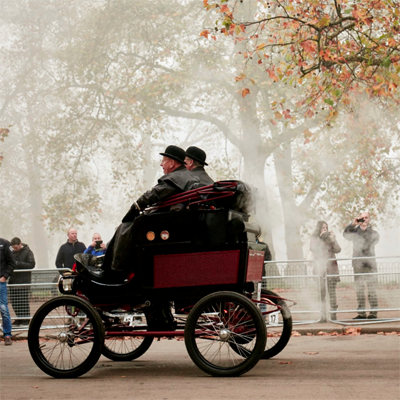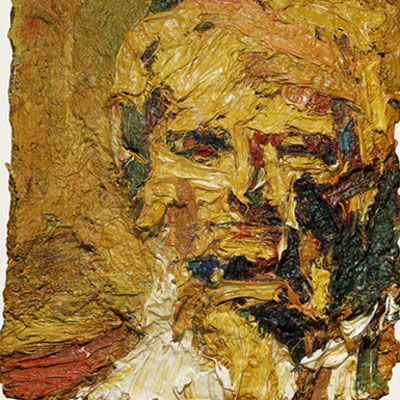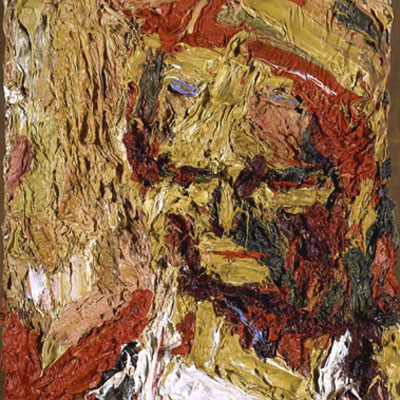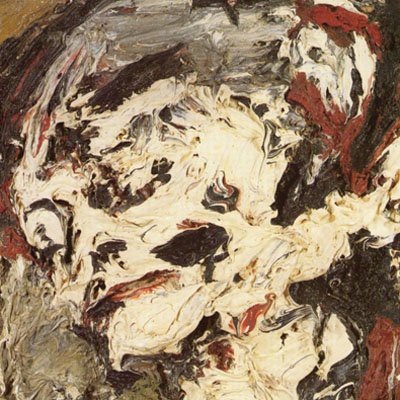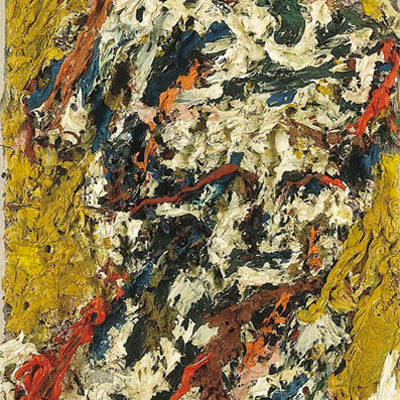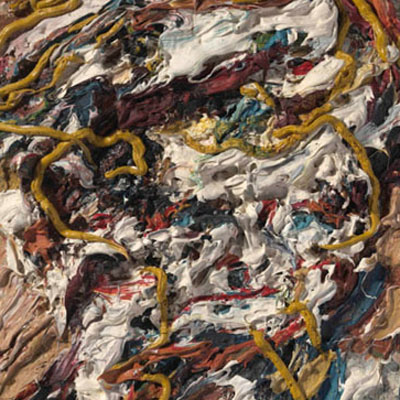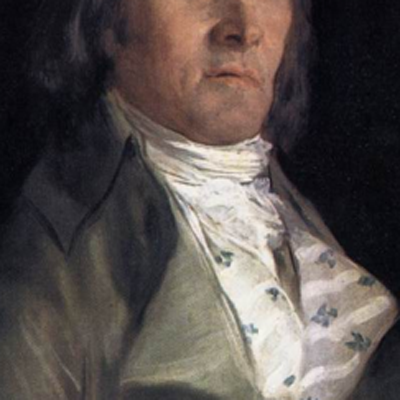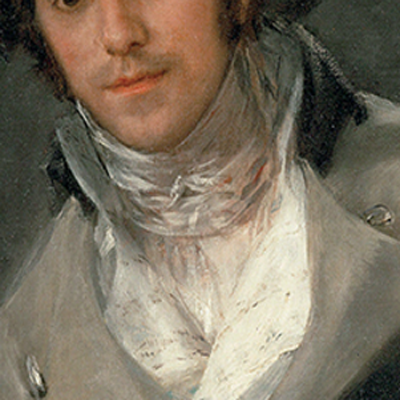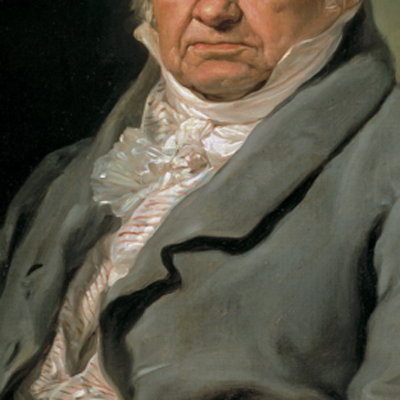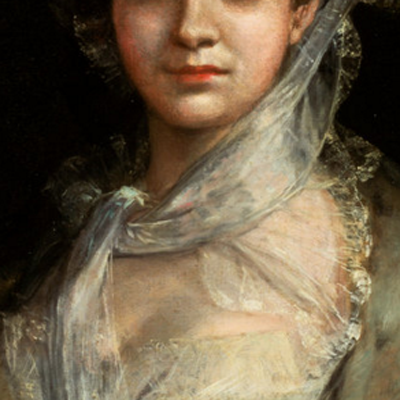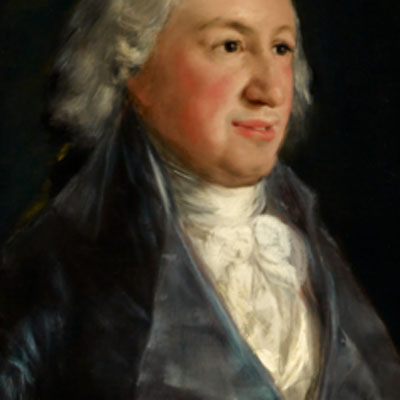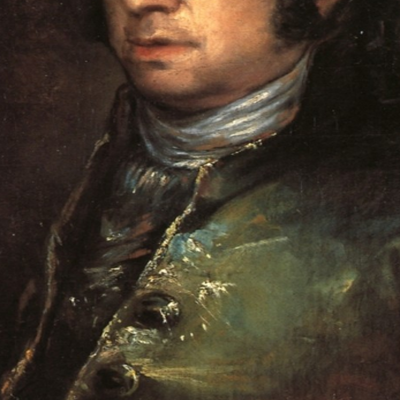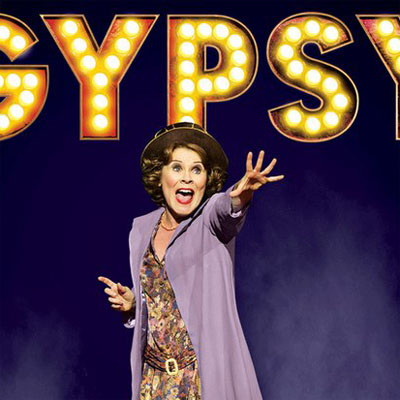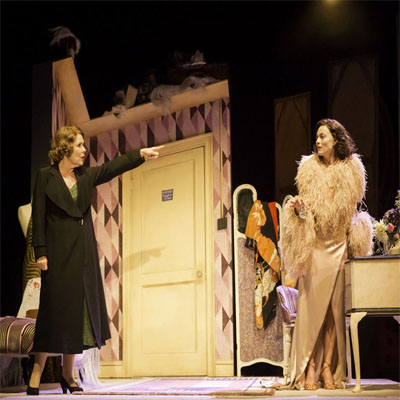160116 – Celts – British Museum, London
> words
Looking at art works over 2500 years hold is a humbling experience. One is immediately aware of ones own insignificance. We occupy our place on spaceship earth for a nanosecond of geological time and within that micro duration we try to create something of value or of use that helps the collective that is the human race. We often talk of The Dark Ages or here The Noble Savage or The Pagan as if these were times without value. Design, technology, social and political structures are and have always been evolutionary the speed of development often controlled only by the speed of communication. The filigree work on a gold brooch from 700AD is as skillful and considered as any from the Middle Ages. The lynch pin that holds a wheel onto a fixed axle cart is as practical an engineering solution as was required. The meandering curves of Celtic art with elongated animals, deer and ducks, have an aesthetic sensibility and compositional skill still influential today.
100116 – Macellaio – Exmouth Market, London
> words
I spent a day thinking about the photos I had taken of the Macellaio restaurant front on Exmouth market to try and describe why I found the images both powerful and yet so familiar. Eventually out of the dusty recesses of my past memories came a visit to the Lumiere cinema in 1989 to see the Peter Greenaway film The Cook, The Thief, The Wife and Her Lover. Greenaway uses framing and frames within frames to both focus the viewer and capture the reference of the work (often a painting). The framing can be literal i.e. enclosure or phenomenal i.e. suggestive or referential. In the image of the hanging carcasses with the sofa we have a double frame. First the Chesterfield leather sofa placed in the street below a canopy captures a space to focus the viewer, a suggestive frame of an interior space. Second the hanging meat is behind the window to a butcher’s refrigerated store, a second framed interior space set deep within the first. Both spaces are private spaces inverted to become public spaces and in so doing create an intimacy with the viewer through suggestive enclosure. Phenomenal space is referenced through subjective association, for me this was the films of Peter Greenaway. The frame within a frame and the inversion of most private to public domain are well-used techniques in Greenaway films. The impossible panoramic scenes supposedly shot in the back of a meat van from The Cook, The Thief, The Wife and Her Lover immediately come to mind as do the food still life paintings of the 17th Century Dutch Baroque.
100116 – Bowie/Yamamoto
> words
The 1970s was a shameful period in recent British history, a combination of huge national debt, over powerful unions, outdated industries and a people that had lost all self belief created the toxic times of the three day week, the IRA, constant power cuts, garbage stacked high on every street and mass unemployment. Against this backdrop of no self hope and no self worth emerged the escapist music of David Bowie and we all rushed in so as to leave the turmoil of the real world behind. Bowie’s characters drew upon many references and among them were the exotic and the oriental, historically a recurring theme for British escapism. Bowie worked with Kansai Yamamoto through the early 1970’s producing some of the most iconic stage costumes of the time that influenced pop culture for generations to come. Here are a few examples. Bowie RIP.
090116 – Collars – Wallace Collection, London
> words
Buffs - Last weeks visit to the Wallace Collection was so inspirational I am back again this week looking primarily at translating armour into fashion items. I have focused on collars but the ideas of embossed, gilded or engraved hard elements that could be used to accompany a collection prevails.
010116 – Hats – Wallace Collection, London
> words
Yesterday I sat reading my Christmas present book Fashioning The Body and an amazing book it is. The book discusses the constant historical re-shaping of the human form for aesthetic, political and sexual agendas and chronicles the worn architectural constructs that enabled this. So where better to spend New Years day than at the Wallace Collection researching under the theme of Hats and Gloves body armour. Sheet metal dressed, fluted, gilded, embossed, engraved, slashed, emblazoned with symbols of political power and symbols to protect the wearer and intimidate the foe. And the language of armour is as rich as the craftsmanship barbute, bascinet, burgonet, cervelliere, hounskull, brigandine, pauncer, aventail, culet, rerebrace, sabaton, tasset to name but a few.
010116 – Gloves – Wallace Collection, London
> words
Yesterday I sat reading my Christmas present book Fashioning The Body and an amazing book it is. The book discusses the constant historical re-shaping of the human form for aesthetic, political and sexual agendas and chronicles the worn architectural constructs that enabled this. So where better to spend New Years day than at the Wallace Collection researching under the theme of Hats and Gloves body armour. Sheet metal dressed, fluted, gilded, embossed, engraved, slashed, emblazoned with symbols of political power and symbols to protect the wearer and intimidate the foe. And the language of armour is as rich as the craftsmanship barbute, bascinet, burgonet, cervelliere, hounskull, brigandine, pauncer, aventail, culet, rerebrace, sabaton, tasset to name but a few.
281215 – Casts – V&A, London
> words
Silver, Brass and Bronze casting, working with gilt, embossed and rolled, decoration from all ages. My interest here is in the possible use for leather work for future Vivienne Westwood collections.
281215 – Knitting With Iron – V&A, London
> words
Back at the V&A again, probably my favourite place at the moment the collection here is endless. Today I am in the Ironwork Galley looking at iron lacework. Simple techniques such as bending, spitting, upsetting, twisting, punching, tapering and drawing applied numerous times on reiterated shapes and fused together make exquisite patterns. To see how a recurring twist or knot can overlay the grammar of a diagonal grid or the endless meander of leaves and volutes.
191215 – Bejewelled – V&A London
> words
The Al Thani Collection. Ancient techniques for setting, clasping, enameling, cutting and polishing all used to make kaleidoscopic compositions
131215 – Europe 1600-1815 – V&A, London
> words
The new galleries at the V&A are now open covering European work from the 17th and 18th centuries. The galleries explain the transition of Europe through three distinct periods. The early 1600’s where Europe is under the influence of the Italian church followed by the early 1700’s under the power of French Royalty. Finally the later part of the 1700’s Europe under the influence of colonialism and the trade routes. These are beautiful galleries with exquisite detailing showing some incredible pieces of work. There is way too much for one day with the senses quickly reaching saturation. At one extreme the extravagance of baroque composition and its use of dramatic lighting and at another the mechanism of the wheel lock pistol. This is a multi visit gallery and one I will enjoy viewing as often as I can.
The galleries sit below ground level but open via a staircase to the main foyer that must look beautiful on plan. Unfortunately on a winters day the galleries quickly fill with the cold air from the foyer and are proving problematic to heat, an interesting problem for ZMMA.
121215 – Molecular – London
> words
At a school in Kings Cross I take a chemistry lesson in cookery. Sodium alginate, calcium lactate, maltodextrin, hydrocolloids and spherification, may have you thinking I was embarking on a Science Class, but no these were just some of the ingredients used throughout the day at the Molecular Christmas course @ the Waitrose Cookery School in Kings Cross. With the current trend for food blogs and the constant stream of food pictures on Instagram my culinary exploits remain more personal, but combining food with science does make things more interesting. How does the liquid made from reduced apple juice and coloured with squid ink, dropped by pipette into the sodium alginate instantly create a film around the sphere and set it? Even after studying Chemistry and Physics at school I am still baffled how reactions can turn one thing into something else.
051215 – Empire – Tate Britain, London
> words
Imagine being a cartographer in 1770 onboard James Cooks Endeavour. The ship lands on the east coast of an unknown huge land mass. There is a sandy beach, trees some hills in the distance and from this information it is intended to chart the new continent. Drawing a landmass by looking at it obliquely mile after nautical mile. Mapping the then unknown planet, marking shallows, currents and wind direction. Collecting all the information required to establish new routes on which to trade. Doing all of this on an oak built, square rigged, three mast Bark. The accuracy of the information collected is astounding and it established the infrastructure required to build a commercial empire. It is difficult to view this exhibition without thinking of Google, Amazon, Facebook or Apple mapping and controlling both our real and virtual worlds. Substitute ecosystem for infrastructure and the parallels are obvious. This is an amazing exhibition covering a heroic period of human achievement.
25-301115 – Vending – Tokyo
> words
I’m in Tokyo this week preparing for the Alice In Wonderland book launch (see spatial tab). For the diary I decided to collect some Tokyo graphic art in combined 2D and 3D in the form of vending machines. Here are some samples.
211115 – Calder – Tate Modern, London
> words
Every architectural student has probably tried to incorporate the spatial fluency of a Calder into a plan, a section or circulation diagram. Trying to retain the lightness and delicacy of the Calder in the heavy and rigid embodiment of architecture and like most students tried and I failed. A Calder is like a dance, it is an event that happens in a space and is not the space itself. The Calder exhibition is charming. The work is filled with the desperation to create beauty out of nothing. Its context is either between wars or immediately postwar. The materials used are minimal, the tooling simplistic and the ideas initially colloquial. Out of all this emerges a kinetic abstraction and a new international modern. This is an impressive biographical exhibition of one mans life’s work. A must see.
141115 – Distance – The National Portrait Gallery, London
> words
The high windows of the café at the National Gallery make the space conducive to reading. I have chosen Satre’s Intimacy an essay I have not read for decades and short enough to be read in an hour. The space is empty as we always arrive for breakfast as soon as the doors open. Intimacy upon its second read seams disjointed, unfocused. It seams to be trying too hard as it jumps from city space to the space captured by a caress. It crudely generalizes on gender and nationality describing each through the micro details of body odour or the roll of skin. The story has no rhythm or poetic but it is haunting as they are the spaces that we all know but never talk about.
We are off to The National Portrait Gallery to see the Giacometti exhibition and a small gem it is to. We are all aware of Giacometti’s ideas or presence and distance and the techniques used, the undefined edge, the elongated body and shrunken head. We are aware that the subject and background are given equal weight and that a moment and a distance are captured unique to that space and time and then vanish forever. What struck me most about Giacometti’s work was the similarity of working method across both 2D and 3D mediums. The constant building up of background, of mass and volume followed by the sharp cutting back, the incision that delineates an overlay that is the micro second before completion, the line on paint or the cut made by the knife on clay. Giacometti’s frenetic back and forth was not too dissimilar to Sartre’s spatial descriptions, so Intimacy was an appropriate prelude indeed.
06-091115 – Relax – Durgan, Cornwall
> words
A well deserved weekend off with no mobile or WiFi just a good book, a beautiful view and a log fire. Thanks to the National Trust we have a cottage on the beach with a view of the sea. Back to work on Tuesday.
011115 – Percussion – Hyde Park, London
> words
It’s pitch dark and we are up at 4.30am to get to Hyde Park for 6.15am to witness the start of the London to Brighton run with cars from 1888 through to 1905 running. It’s a fantastic misty morning with an autumn leave backdrop and the Serpentine lays mirror still. The air is full of smoke and oil accompanied by the clatter of vibrating mechanicals. Huge four litre single cylinder engines popping up and down shaking everything attached to them into a forced motion choreography, occupants included. Depending on the displacement, upon the number of cylinders (usually one or two) and the rotation of the cylinder block this describes the dance. With the cylinders placed vertically the car vibrates up and down, the whole vehicle bouncing on its leaf springs. Headlights nod, hats flap, bodies jog. The cylinder block placed horizontally shakes the car from side to side, everything wags, left right, left right, occupants move in a rhythmic counter sway all to the percussion of a-chuga-chug, a-chuga-chug. There are over 400 hundred cars all swinging and jittering whilst playing percussion in one huge mist enclosed orchestra. Today we were slow and missed our chance we were overwhelmed by the shear excess of the day but now we have a clear agenda for the next meeting. After the cars have all left on their run to Brighton we move on to Berners Tavern (with the amazing ceiling) for breakfast.
311015 – Frank Auerbach – Tate Britain, London
> words
Imagine a 1970’s habitat jumbo cord sofa in beige covered in matted Afghan dog hair and Persian cat fur balls. Smeared onto this are the remnants of an exploded lava lamp and stains left by spilled coffee, angel delight, cherry coke and a TV dinner. This is then dusted with years of joss stick and cigarette ash that has been repeatedly scraped clean until patches are threadbare. This is an Auerbach.It makes no difference whether this is the 1950’s or 1990’s this is always an Auerbach.
The three dimensional texture of thickly applied oils on canvas has huge appeal I am wondering if I can find a computer programme that can weave or knit textiles into a 3d matrix.
231015 – Goya – National Portrait Gallery, London
> words
I came to the National Portrait Gallery to look at Spanish lace, border embroidery and how to tie an eighteenth century Spanish shirt. The exhibition is not large and the work ranges from masterful to mediocre. The crowds were impossible and even my membership pass helped little. Viewing paintings whilst in a queue or when standing three people back is pointless so I will return to this exhibition later in the year when things quiet down. And yes that's me on the end, sorry couldn't help it.
191015 – Gypsy – Savoy Theatre, London
> words
I am generally not one to go and see musical theatre but the reviews for Gypsy and in particular Imelda Staunton playing Rose had me climbing the stairs to the Grand Circle of the Art Deco Savoy Theatre. From her first entrance Imelda takes over the stage, her portrayal the overbearing and pushy mother fighting to get her daughters to be stage stars to make up for the missed opportunity she would have relished in her youth. The whole cast from the group of young children and the nauseating Baby June, through to Lara Pulver as Louise and Peter Davidson as the downtrodden agent Herve. In the final curtain call the sheer exhaustion of the performance was clearly shown on Imelda’s face, as she really did become Rose from start to finish.
